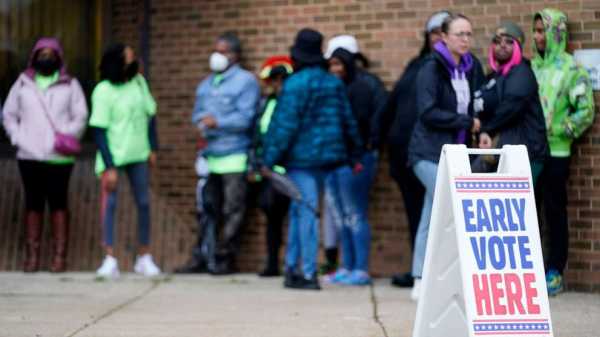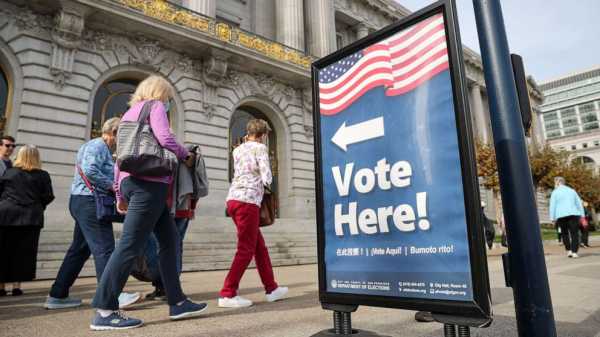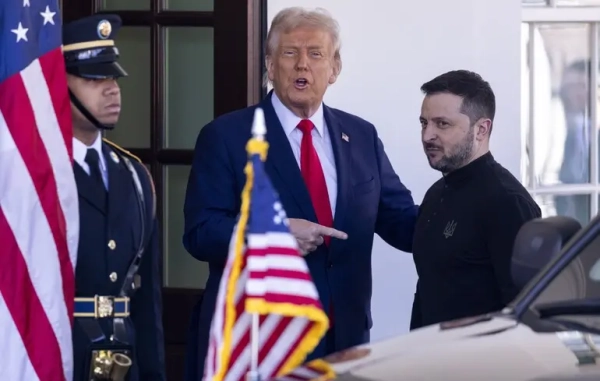More than 20 million people have already voted in the 2022 general election, according to data analyzed by the University of Florida's U.S. Elections Project.
The project, which compiles public data on early voting at ElectProject.org, had counted 20,437,284 early votes, including 12,455,429 mail-in ballots and 7,981,855 in-person ballots, cast as of Oct. 30. There have been 56,175,142 total mail ballots requested.
University of Florida professor Michael McDonald, who oversees the Elections Project, said that early turnout so far in 2022 was higher than usual for a midterm election.
MORE: Voting and vote-counting concerns grow ahead of midterms: The Note
"It's clear that we are above the 2018 midterm at the same point in time in states where we have comparable data to look at," McDonald told ABC News in mid-October.
McDonald noted that 2022 turnout is likely to be on par with 2018 midterm turnout, which broke records previously set more than a century earlier. Midterm elections typically turn out fewer voters than during years when a presidential election is held, but the recent numbers indicate a growing trend of participation over the past few years.
"We do know that interest is running high for the election. We can see the sorts of indicators that would suggest that we're in for a high-turnout election, much like we had in 2018. And 2018, was the highest midterm turnout rate since 1914," he said.
"So, it was a fairly exceptional election, I mean 2020 was also exceptional in that it had the highest turnout for presidential elections since 1900."

People line up outside a polling station to cast their votes on Oct. 25, 2022, in Milwaukee.Morry Gash/AP
Early voting is underway in more than 40 states ahead of Nov. 8. Early voting periods range in length from four days to 45 days before Election Day, with an average length of 19 days, according to the National Conference of State Legislatures.
Between 2006 and 2018, the percentage of national voters who cast their vote at a polling site on Election Day dropped from roughly 80% to roughly 60%, according to voter data. During that same period, the percentage of voters who chose early in-person voting grew from 5.8% to 16.7%, and the percentage of voters who mailed in their ballot increased from 13.8% to 22.3%.
But a rise in the use of early voting began to really spike during the 2020 presidential election, when the COVID-19 pandemic dampened in-person voting and triggered many state legislatures to expand mail-in options. The 2020 election saw record-breaking turnout and also was the first time more people voted before Election Day than on it.
McDonald noted that the current midterm early voting trends may be indicative of a more permanent, stronger pattern of early voting.
"What we're observing here is that some people have changed their behavior. They're either voting early, where they may not have done so in a past midterm election, or they're voting sooner than they would have," he said. "Those are both things that we saw in 2020, where people were not only voting by mail, and in-person early at greater frequencies then they had past elections, but they were also voting earlier than they had in prior presidential elections."
Of the states that record party registration, the U.S. Elections Project shows more Democrats have voted early this cycle — 45.5% compared to only 32.9% of Republicans.
The share of Republicans who are recorded saying voters should be allowed to vote early or absentee without a documented reason fell drastically in the past few years, according to a 2021 Pew Research survey– down 19% from 2018.
The use of absentee and mail-in ballots have been subject to conspiracy and skepticism after former President Donald Trump said that mail-in ballots lead to voter fraud in 2020.
Arizona, which began mailing ballots out to constituents on Oct. 12, was ground zero for election fraud claims, with Trump alleging mass fraud in the state — joined later by now-gubernatorial candidate Kari Lake and secretary of state candidate Mark Finchem. Arizona Attorney General Mark Brnovich, a Republican, and the courts have refuted these baseless allegations, saying there was no evidence of widespread voter fraud or irregularities associated with the 2020 presidential election in Maricopa County, the state's most populous.
MORE: Election Day is just one month away. Here's where things stand
On CNN on Oct. 16, Lake again refused to commit to conceding if she loses and laid the groundwork for sowing mistrust in mail-in voting options: "We don't want to be counting for 10 days," Lake said.
According to the U.S. Elections Project data, the large states of Texas, Florida and California lead among the most early votes cast so far, with more than 2 million in each state. Both Texas and Florida are approaching 2.5 million.
McDonald said that because of Florida's larger size, broader voter turnout activity was expected, along with the fact that Floridians tend to use mail ballots more frequently than some of the other states that have so far been casting votes early. Though other large states like California, which sent their mail-in ballots out later than the Sunshine state, have quickly caught up.

A voting sign is seen outside of the City Hall as early voting continues for “Consolidated General Election” in San Francisco, October 28, 2022.Anadolu Agency via Getty Images
GOP Gov. Ron DeSantis encouraged Republicans to vote by mail at a campaign event on Oct. 15, saying he has "confidence" in Florida's elections. The governor polled the crowd at the event, asking how they'd vote: attendees erupted into cheers when he asked who might cast ballots on Election Day, followed by silence when he asked if they might vote by mail.
"What I would say is whatever you like is fine. We've got good returns on absentee, and I have confidence in early voting, in person [voting], and of course Election day [voting]," DeSantis said.
Sourse: abcnews.go.com






